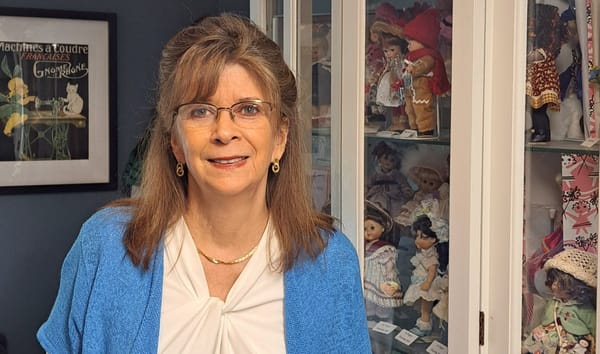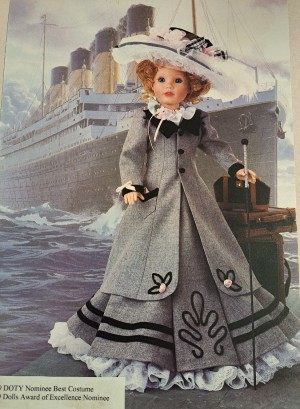The Rural We: Deborah Oskwarek
The award-winning doll clothing designer now teaches individual sewing classes at her studio in Kent.

The award-winning doll clothing designer now teaches individual sewing classes at her studio in Kent.


You know the names of couture designers; now let us introduce you to an award-winning doll clothing designer. Deborah Oskwarek designed wardrobes for dolls from some of the biggest names in the industry. Her designs generated over 25 international awards for doll costuming. It all began because she learned to sew at a young age, and now, though no longer designing doll clothes, she’s teaching the art of sewing from her studio in Kent, Connecticut, where she’s lived for “50-plus years.”
I’ve been sewing since I was nine. My mother was a seamstress and did alterations for a department store, Genung’s, in Danbury. She taught me how to sew and I made my own clothes growing up. Someone gave me an antique porcelain doll in a shoebox. It was all in pieces, and I started to restore antique dolls.
A job came up with the Susan Wakeen Doll Company in Litchfield. At the time she was the most awarded baby doll artist in the country. She hired me to put lace on slips and iron some of the clothes. But Susan said, “I like your style, would you design for me?” I was so excited; it was one of those moments when you can’t think straight. I started designing for her, and after four years, went out on my own and worked for other doll companies at my studio at home.
I didn’t have any training at all, but when you love something, you just naturally gravitate to it. I worked for the Vogue Doll Company in California, which produced the Ginny doll. In the 1950s there was a Ginny doll for every fourth household in America. I also worked for Danbury Mint and Marie Osmond Dolls (which she put on QVC).
I did doll clothing design for about 12 years. My favorites were the period costumes, like the ones for Scarlet O’Hara, Molly Brown [photo, above] and Anne of Green Gables. I won awards for those at the New York Toy Fair, and my dolls were cover girls for doll magazines.
What I like to do now is refashion clothes. I’ll pick up a dress from the 90s, all loose and flowy with hardly any shape. I cut it all up and make it look like something from the 50s, with darts, a waist, and detailing. Refashioning is coming back into vogue — you go to a thrift shop and make a garment into something you like. I do alterations for people, and if they want something changed, I like the challenge.
I’ve been offering individual sewing lessons for about four years. Most of the students have never even touched a sewing machine. A lot of them are young people, and it’s nice to see that they’re interested in sewing.
Interested in learning how to sew? Email Deborah Oswarek about lessons.

